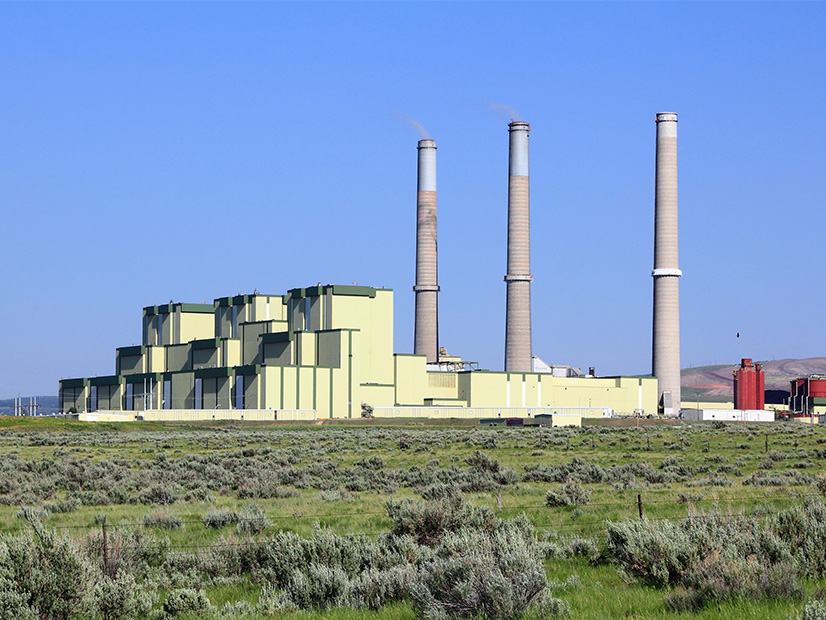
Rural electric cooperatives face challenges different from investor-owned utilities as they pursue clean energy goals, the leader of Tri-State Generation and Transmission Association said.
Tri-State CEO Duane Highley was the featured speaker in a May 28 webinar hosted by the American Clean Power Association. He pointed out that the customers served by cooperatives often are spread farther apart than IOUs’ customers and that the communities that cooperatives serve often have high rates of poverty.
But one of the biggest differences is coal, which is in the crosshairs of most decarbonization scenarios. The Power Plant and Industrial Fuel Use Act of 1978 had the effect of steering cooperatives toward coal-burning plants at a time when they were rapidly expanding generation capacity, Highley said. As a result, they are more reliant on coal than other power industry sectors.
“And now as we make a transition, it’s especially challenging because to reduce carbon emissions, we’re retiring coal, which for us is the majority,” he said. “So when you talk about, ‘Oh, just shut down your coal plant,’ what if that’s over half of your capacity in one plant?”
Forty-one of Tri-State’s 44 members are electric distribution cooperatives and public power districts. They serve more than 1 million customers across nearly 200,000 square miles in Wyoming, Colorado, Nebraska and New Mexico.
ACP CEO Jason Grumet asked Highley how Tri-State is managing its transition from coal to renewables.
Tri-State’s board and its member-owners were supportive of the move, Highley replied, as long as the result was reliable and affordable.
“So that’s what we’re doing, and we’re doing it at what I’d call light speed for a utility,” he said. “We … are building hundreds and hundreds of megawatts of wind and solar. And people who said ‘you can’t do that and keep the lights on’ are wrong. We’re able to do this and prove reliability at an accelerated level.”
To meet reliability needs, Tri-State is overbuilding renewables and looking forward to long-duration energy storage technology maturing, he said. And it is retaining fossil backup.
“We’re going to keep a lot of gas and oil generation around because we have to have it for reliability,” he said.
Tri-State’s proposed resource plan calls for a new combined cycle gas-burning plant with carbon capture and sequestration capacity retrofitted later.
Highley is excited about the potential of small modular reactors as well, again as a backstop for reliability. But he thinks they are at least a decade away and that cooperatives cannot be first adopters; someone else must take the risk of proving the concept.
Tri-State also needs to be in an RTO, to transfer power between regions and balance out spikes or lulls in intermittent power generation, Highley said.
“And that’s why we’ve been so much an advocate for promoting the western expansion of the Southwest Power Pool. And we believe it’ll be starting up the first quarter of 2026 in our area,” he said.
Along with the challenges unique to cooperatives, Highley laid out some that are common across the power industry: rapid growth of demand and constraints on transmission to meet that demand.
“There’s definitely growth coming, and it is exceeding what we had been previously forecasting,” he said, citing electric vehicles and overall electrification as the primary causes, along with data centers that can consume a gigawatt apiece.
“There’s just not a utility that I know of in the West that has a gigawatt of surplus capacity that they say, ‘Hey, I’m not using it right now. Would you like to hook up?’” Highley said.
“Plus the transmission question,” he added. “There are very few areas on the grid where you can drop hundreds of megawatts of load without making some significant transmission investments. And what we’ve seen in the past is it can take anywhere from five to 15 years to get a new transmission line built.”
Highley gave a nod to the state and federal policymakers who set decarbonization goals but don’t have to do the actual work of meeting them.
“We can make lots of growth. We just can’t make maybe as much as fast as people would like to see [in] some instances.”



